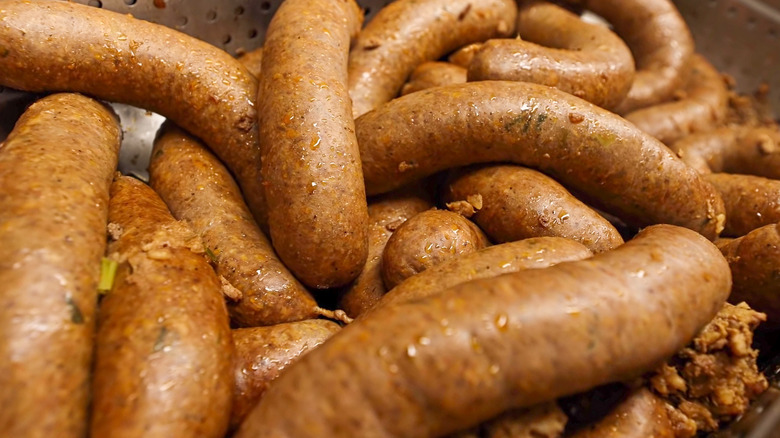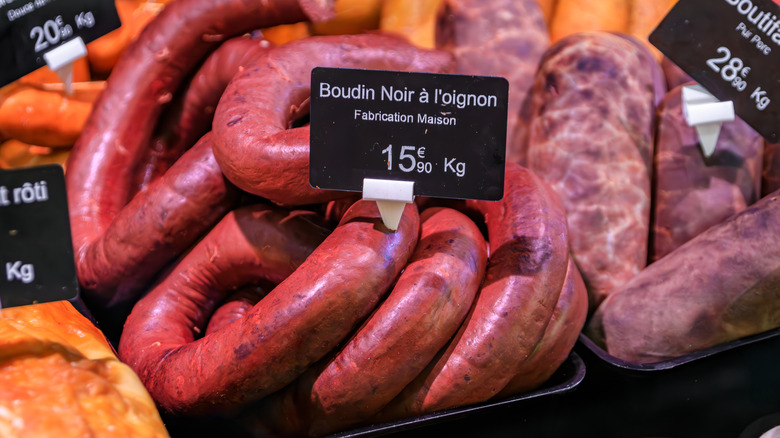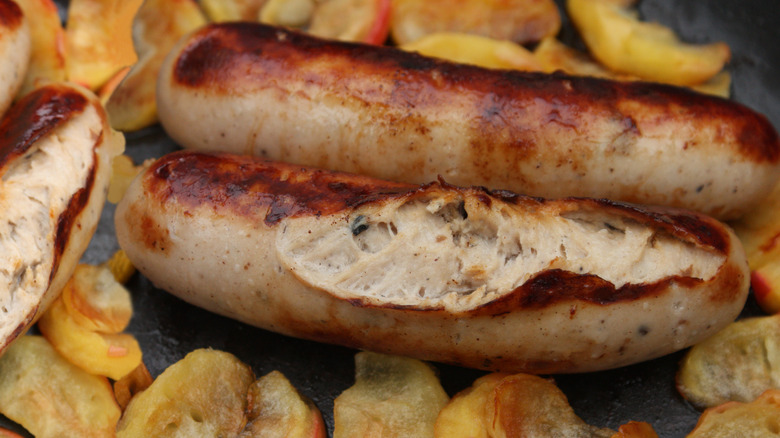What Is Boudin Sausage And What Makes It Different From Andouille?
Some of the best food in the United States comes from Louisiana, where Creole and Cajun cuisines reign supreme. These exciting fusion foods are essentially blends of ingredients and cooking styles from African, Caribbean, Native American, Spanish, and French cultures. Dishes like jambalaya, gumbo, and etouffee are emblematic of these culinary styles, but those in the know understand that boudin is a significant part of the cuisine as well.
Boudin is a type of sausage made from cooked pork, rice, onions, green peppers, and seasonings. Unlike other types of sausage, which involve placing uncooked meat and seasonings into pork casings, boudin starts by cooking all the ingredients first, and then stuffing the prepared mixture into the casings. Of course, anyone who has visited Louisiana knows that andouille sausage is just as prevalent in the local cuisine as boudin. Andouille contains several of the same ingredients, such as pork, onions, and seasonings. However, it does not include rice, and it is always smoked and flavored with garlic and wine.
How to eat boudin
One unique aspect of boudin is that the sausage casings, which are tasteless, often don't get eaten. They are completely edible, but the real star of boudin is the filling itself, which many people simply squeeze out to eat, or sometimes stuff into bread or top crackers with. The filling is used to make boudin balls, boudin-stuffed chicken, and even boudin king cake. While pork is the traditional meat used in the filling, other variations of the sausage include shrimp, crawfish, venison, rabbit, and alligator. However, rice is always present in boudin sausage. It's very much a casual, everyday, any-occasion type of food, enjoyed for breakfast, lunch, dinner, or as a snack. Boudin can be found everywhere in Louisiana, from gas stations to grocery stores.
Some boudin has a reddish hue; this is most likely boudin rouge (also called boudin noir), which is made with pig's blood, and is similar to blood sausage or black pudding. Boudin rouge may be mistaken for andouille, but the two are very different. In Creole and Cajun cuisine, andouille is an essential ingredient in jambalaya and gumbo, but it also appears in shrimp and grits, in crawfish or crab boils, as a component of beans and chili, or simply eaten hot off the grill.
Just how big is boudin?
The impact of boudin on Louisiana culture and cuisine is substantial. It's similar to how bourbon is perceived in Kentucky, or wine in Napa; there's even an official Cajun Boudin Trail centered around Lafayette. This trail guides hungry adventurers to various shops and eateries renowned for their superior boudin. While these signature sausages may contain the same basic ingredients, the proportions and seasoning types and amounts are determined by each producer, creating unique links. For this reason, a journey on the trail offers a multitude of interpretations of this southern staple, accompanied by items like pork cracklins, deep-fried boudin balls, and even fried chicken. Similarly, there is an Andouille Trail in the Louisiana River Parishes.
If you make or acquire boudin sausage, use it as Louisiana locals do: in everything. Squeeze the filling from the casing to create boudin egg rolls, tacos, and empanadas. Fry it up until it's crispy, and serve with a poached or fried egg, or squeeze it onto chunks of crusty bread.



